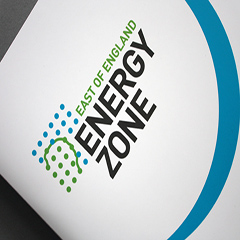Companies hoping to build wind farms off the East Anglian coast under the government’s new funding regime will have a bigger pot to vie for.
An extra £25m has been made available as the first projects under the new Contracts for Difference funding mechanism compete for £325m investment for low carbon technologies – £25m more than predicted when the auction budget was set out last October.
The East of England is poised to hear which contracts – if any – are awarded for new wind farms off its coast when the results of the maiden CfD auction are revealed in two weeks.
Industry experts hope that at least one of the east of England projects believed to have bid – East Anglia One, Galloper or Race Bank – will be among the winners announced on February 26.
But, with the extra money in the pot in a five-year bidding process, they are hopeful that all three could be winners by 2020.
James Gray, inward investment director for the East of England Energy Zone, said the extra money and the five-year process of the CfD mechanism was a strong message about the future of wind energy – and the thousands of jobs and economic boost the new wind farms would bring.
Market leaders were viewing the east of England as key for offshore wind development with Norfolk and Suffolk ports particularly well placed, he said.
“We would like to win first time round but the key thing is that we are now seeing a process kicking in.
“We are well-placed to win substantial investment for our region in the next five years with one, two or even three new wind farms here.”
“This is the start of at least a five-year process of major subsidies coming out from government to the industry. It is very much a step change for activity. We are talking about moving up a gear or two in terms of the scale of investment that will happen with each of these rounds – and the best-placed wind farms to win it are in easy reach of our ports at Great Yarmouth and Lowestoft.”
The first bids had to be submitted by last Wednesday with competition predicted to be fierce.
The government has warned that only the most competitive projects would receive contracts to drive down the cost of low carbon energy for lower prices for the consumer – and because investment is from the public purse.
Contracts have to be signed by March 27.
Bidders for the first slice of £260m for wind farms remain unclear because developers are banned from collusion and revealing their bid values.
Contracts for East Anglia One, Galloper or Race Bank would signal major opportunities for jobs and supply chain business for Norfolk and Suffolk.
The industry was uncertain about how the CfD mechanism will work because it is untested, Mr Gray said.
“The positive side of it is that this will be happening every year and there are a limited number of projects that are ready to go or close to being ready to go.”
“It signals some longer term certainty for the offshore wind market. Each year, a very substantial amount of money is coming forward from the government and they will see this first process through to 2020.”
The East of England Energy Zone is a unique partnership of industry and local government set up to provide one stop access for businesses setting up in the area including introductions to the local supply chain.
Mr Gray said: “Great Yarmouth, Lowestoft and Wells have already been chosen to support the Dudgeon, Greater Gabbard and Sheringham Shoal wind farms while local companies like Seajacks, 3 Sun, Alicat and many others are well established as key suppliers to the industry.
“There is significant investment potential for coastal towns, ports and the supply chain in the East of England and all predictions are that our region should benefit significantly from the development of these wind farms over the next 20 – 30 years.”
“A few years ago we were barely on the map; now our ports are seen as in a prime location to support the development of the next round of massive wind farm development.”
DECC secretary Ed Davey announced the extra £25m starting in 2017-18 for Pot 2 funding as the deadline for bids closed.
“We are transforming the UK’s energy sector, dealing with a legacy of underinvestment to build a new generation of clean, secure power supplies that reduce our reliance on volatile foreign markets.
“The high demand for contracts shows that we’re one of the top places for renewables investment, and the best place in the world for investing in offshore wind,”
“Renewable electricity generation and investment have both more than doubled since 2010. We attracted a record £10 billion worth of investment in 2014 and by making projects compete for support, we’re ensuring consumers get the best possible deal as well as a secure and clean power sector.”



























